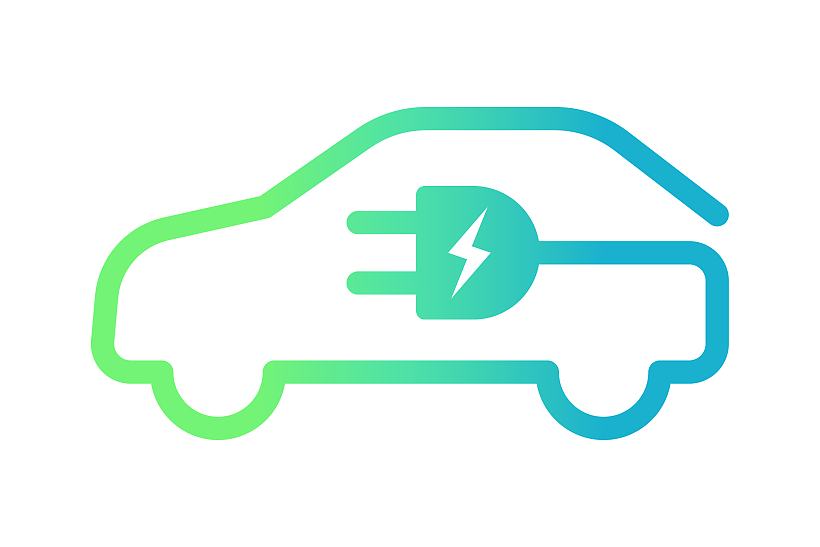There has never been a better time to transition your fleet to electric vehicles (EVs). Rapid advancements in technology, along with a global commitment to sustainability, create a uniquely favorable environment for electrification. By electrifying your fleet, you position your business at the forefront of innovation while preparing your operations for an evolving transport landscape.
An effective, efficient transition requires sound planning. And there’s truly a lot to think about. To help you get started on the right path, we’ll outline the advantages of electrifying your fleet. Knowing the advantages of fleet electrification is one thing. Understanding where to get started—or how to advance an existing EV strategy—is another. So, we’ll also list the three most important steps you can take.
Reasons to electrify your fleet: The business advantages
Lower operating costs
Operating costs for EVs tend to be much lower than those for internal combustion engine (ICE) vehicles, especially when you factor in fuel and maintenance. Webfleet research shows that, on average, fleets with EVs save 5,665 litres of fuel per vehicle every year. Moreover, EVs require less maintenance due to their simpler drivetrains and lack of traditional engine components. With fewer moving parts, EVs don’t need oil changes or complex engine maintenance.
By involving drivers in your deployment of EVs, you can save even more. Training them on energy efficient driving, for example, could make a big difference in EV performance. Keeping a constant speed, coasting when appropriate and regenerative braking are all ways that drivers can improve range. It’s a matter of being able to monitor driving behaviour and energy consumption patterns across your fleet. You can do that with a tool like Webfleet’s OptiDrive 360, which makes it easy to compare, evaluate and coach drivers.
Financial incentives
Governments worldwide actively promote electrification through various incentives. These programmes aim to encourage businesses to transition their fleets to EVs. Tax credits, grants and subsidies are available, significantly reducing the upfront costs associated with purchasing electric vehicles.
It is essential for businesses to research and take advantage of initiatives available in their region or country. As one example, Transport for London rolled out an expanded scrappage scheme in August, to spur vehicle compliance with the city’s ultra-low emission zone, or ULEZ. The expanded scheme includes increasing payments to van fleets by £2,000 and providing £9,500 grants for electric vans.
The UK government website lists several opportunities to take advantage of. There’s a workplace charging scheme, which supports upfront costs for installing EV chargepoints. You may want to consider a range of grants for charging infrastructure. Then there’s a “plug-in” grant for discounted vans.
Greater environmental responsibility
One of the most compelling reasons for businesses to embrace electric vehicles is their positive contribution towards decarbonisation. In the coming years, policy shifts will make it virtually impossible to operate a successful fleet without decarbonising.

Like London, many cities across Europe have already implemented Low Emission Zones (LEZ). By 2030, Zero Emission Zones (ZEZ) will be introduced; only vehicles that don’t emit CO2s will be allowed to drive in ZEZ areas. EVs produce zero tailpipe emissions, resulting in less GHGs produced by the transport sector and improved air quality for everyone.
Whether it’s in the UK or the EU, the transport industry generates more GHGs than any other sector at roughly 25% (24% in the UK and 25% in the EU). By going electric, your fleet can prevent emitting around 15 tonnes of CO2 per year—per vehicle (see our infographic on cutting carbon with EVs).
Prepare to electrify your fleet: the first 3 steps
1. Consider your fleet’s needs around charging infrastructure and range
The development of charging infrastructure is a crucial aspect of EV adoption. The availability of public charging stations and depot charging options is continually improving, making it easier for businesses to incorporate EVs into their operations. Additionally, advancements in EV battery technology have resulted in longer ranges and faster charging times, mitigating range anxiety and making EVs more practical for various business applications.
2. Use Total Cost of Ownership (TCO) to guide your transition
Do a comprehensive cost analysis. Comparing the TCO of EVs vs. traditional ICE vehicles will reveal your potential savings over the long term. Factors such as purchase price, fuel and maintenance costs, depreciation and resale value must be considered. It’s also important to examine your fleet’s specific needs and usage patterns, from business mileage and typical routes to the availability of charging infrastructure.
3. Get expert help with planning your electrification strategy
The big question for anybody wanting to add EVs to their fleet is this: How can I reap the benefits and avoid the pitfalls?
While the benefits of EV adoption are clear, businesses may face certain challenges when transitioning their fleets. These speed bumps can include initial investment costs, limited vehicle options and concerns about charging infrastructure. But there’s plenty of expert help out there.
At Webfleet, for instance, we offer analytical tools and consultations. Not sure which of your ICE vehicles could be replaced with EVs in a cost-effective manner? Wondering which battery pack will enable you to optimise your investments? Just speak with one of our EV experts, at a time that works for you.
Adding EVs to your business fleet offers substantial cost savings and makes positive strides towards decarbonising the transport sector. We realise that going electric doesn’t happen overnight. Some fleets run on a combination of ICE vehicles and EVs. Our experts can help you optimise your electrifying journey, whether you’re just starting out or already manage a full fleet of EVs. So if you’re looking for custom advice for your fleet, let us know—request a consultation now.
Ready for your EV transition?
Download our guide to going electric and unlocking the full potential of EVs.








